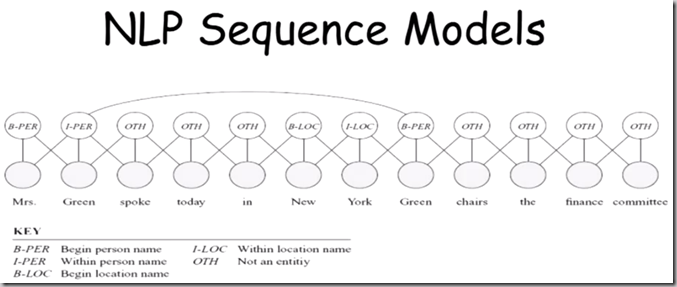Probabilistic Graphical Models-Template Models
factor(a function/table)是对于variables(the scope of the factor)的某种combination的fitness。在BN中factor就是conditional probability distribution(CPD);但factor并不总对应着某种概率(当然也不一定取0~1),比如说在MRF中。和数据库table的操作类似,factor上的基本操作有factor product ,factor marginalization & factor reduction。
实际中最常用的模型大概是含有shared structure和shared parameters的模型,比如说NLP里面的sequence model,举一个做Named entity recognition的例子,联系着latent变量的参数(type of entity),是independent of the place and the sequence的(假设position in the sequence与参数无关),这样的好处是:
- reuse of parameters
- allow us to apply the same model to sequences of varying length
Template models are languages that specify how variables inherit dependency model from template(representation that allows us to solve multiple problems using the same exact model)
- parameters are shared not just between models but also within the model
- Template models are a convenient way of representing Bayesian networks that have a high amount of parameter sharing and structure. (allow us to construct large models from sparse parameterization and entire family of models from a single concise representation)
- At the end of the day, however, they are merely compact representations of a fully unrolled Bayesian network, and thus have no additional representative powers.
- Dynamic BNs are intended for dealing with temporal processes,for example,where we have replication over time.
- we have a range of languages for Object-relational models,both directed models(plate models) and undirected models, where you have multiple objects.
Advantages of template models:
- Template variable(ground variables/concrete instantiations of variables) are instantiated/duplicated multiple times. CPDs in template models can often be copied many times.
- Template models can often capture events that occur in a time series.
- Template models can capture parameter sharing within a model.





 浙公网安备 33010602011771号
浙公网安备 33010602011771号